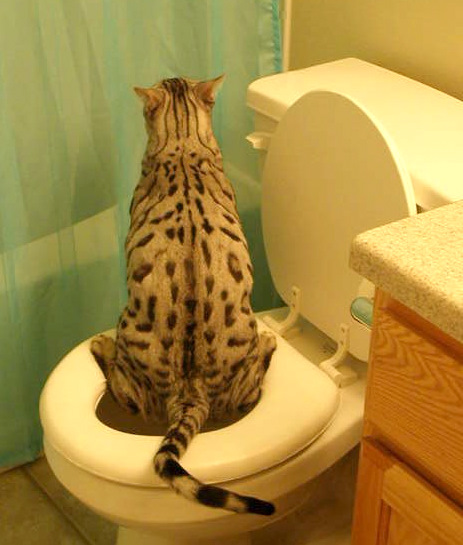Essential Considerations Regarding Flushing Animal Waste Down the Toilet
Essential Considerations Regarding Flushing Animal Waste Down the Toilet
Blog Article
The writer is making a number of good pointers on Why you should never flush dog poop down the toilet as a whole in this post just below.

When it comes to dealing with waste, specifically animal waste, many individuals typically turn to the convenient option of flushing it down the commode. Nevertheless, this seemingly easy remedy can have significant effects for the environment and public health. In this post, we'll discover why flushing animal waste down the bathroom is a poor concept and provide different methods for proper disposal.
Intro
Proper waste disposal is vital for maintaining ecological sustainability and public health. While it might seem harmless to flush animal waste down the toilet, it can result in various problems, both for the setting and human health.
Dangers of flushing animal waste
Ecological influence
Purging animal waste presents dangerous germs and pathogens into rivers, which can negatively impact aquatic environments. These virus can pollute water sources and injury aquatic life, interfering with delicate communities.
Public health concerns
Pet waste has dangerous microorganisms such as E. coli and Salmonella, which can position severe wellness dangers to humans. Purging pet waste down the commode can pollute water materials, causing the spread of conditions and infections.
Alternatives to flushing
As opposed to flushing pet waste down the commode, there are a number of different disposal methods that are more environmentally friendly and sanitary.
Composting
Composting pet waste is a green means to dispose of it. By composting, organic matter is broken down into nutrient-rich dirt, which can be used to feed gardens and plants.
Garbage dump disposal
Taking care of pet waste in a landfill is an additional option. While not as environmentally friendly as composting, it is a much safer option to flushing, as it avoids the contamination of water resources.
Animal waste disposal systems
There are specific family pet waste disposal systems offered that safely and hygienically get rid of animal waste. These systems typically use enzymes to break down waste and remove odors.
Actions to appropriate pet waste disposal
To guarantee proper disposal of pet waste, follow these actions:
Scooping and bagging waste
Frequently scoop and bag animal waste making use of biodegradable bags. This avoids waste from polluting the environment.
Using designated waste containers
Dispose of bagged animal waste in assigned waste bins, such as garden compost containers or garbage dump containers. Avoid flushing it down the commode whatsoever costs.
Cleansing can and animal locations on a regular basis
Regularly tidy litter boxes and pet dog areas to avoid the build-up of waste and bacteria. Usage pet-safe cleansing products to maintain health.
Benefits of appropriate disposal approaches
Adopting correct disposal approaches for pet waste supplies a number of advantages:
Reduced environmental pollution
Proper disposal methods minimize the danger of environmental pollution, securing rivers and environments from contamination
Decreased threat of water contamination.
By staying clear of flushing pet waste down the toilet, the risk of water contamination is substantially reduced, safeguarding public health.
Enhanced sanitation and hygiene
Proper disposal techniques promote better hygiene and hygiene, creating a more secure environment for both humans and pets.
Conclusion
In conclusion, flushing animal waste down the toilet is hazardous to the setting and public health. By adopting alternate disposal approaches and adhering to appropriate waste administration techniques, we can reduce the unfavorable effect of pet waste and add to a cleaner, much healthier world.
What To Do With Dog Poo – The Do's And Don'ts Of Disposing Of Faeces
Dog poo bins
Some councils provide dedicated dog waste bins in popular dog-walking areas that can take dog poo that has been bagged but you can legally dispose of dog waste in any public litter bin, as long as it is securely bagged. This also applies to your wheelie bin at home.
Do not flush
Water companies do not recommend flushing dog faeces down the toilet because certain parasites can survive the water processing treatment and are potentially harmful to humans. You should also never consider flushing dog poo that has been bagged down the toilet as the bags will not break down and instead create severe blockages in the sewage system.
In the woods
The Forestry Commission promotes a ‘stick and flick’ method for dealing with waste in the woods. This means finding a stick and using it to flick any poo from off the path so that it is out of the way of other walkers. You could also bury it as long as it is not in an area where there might be livestock.
Livestock
Parasites found in dog poo can be transmitted to livestock if they inadvertently eat infected faeces that has been left on grazing land. This could result in the death of sheep or abortion in cattle so you should always make sure you pick up your dog’s waste in fields where livestock could be present.

Do you like reading up on Should you flush animal waste down the toilet? Post feedback directly below. We'd be glad to listen to your thinking about this write up. We are looking forward that you come back again later on. You should pause to distribute this entry if you enjoyed it. Thanks a lot for your time. Please visit our website back soon.
Book Report this page